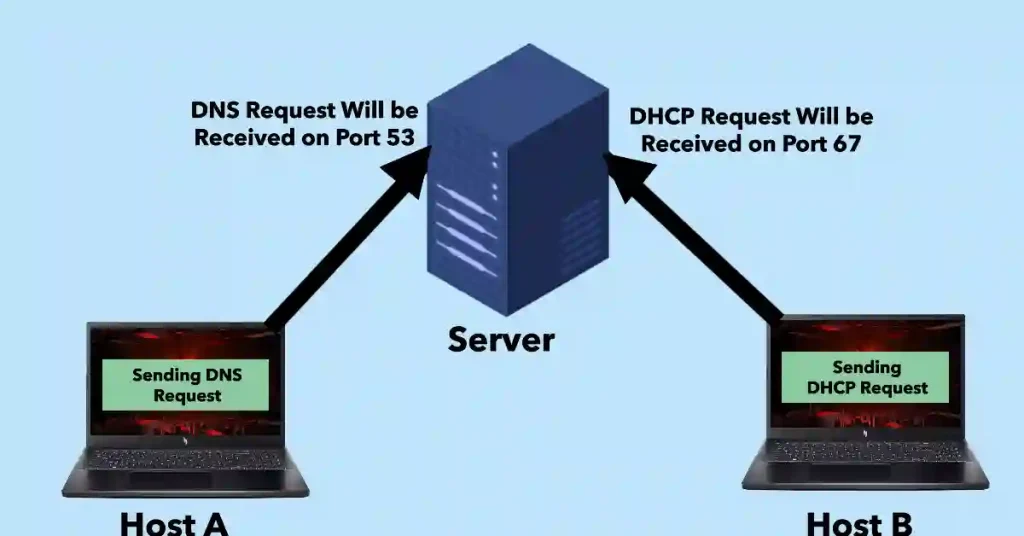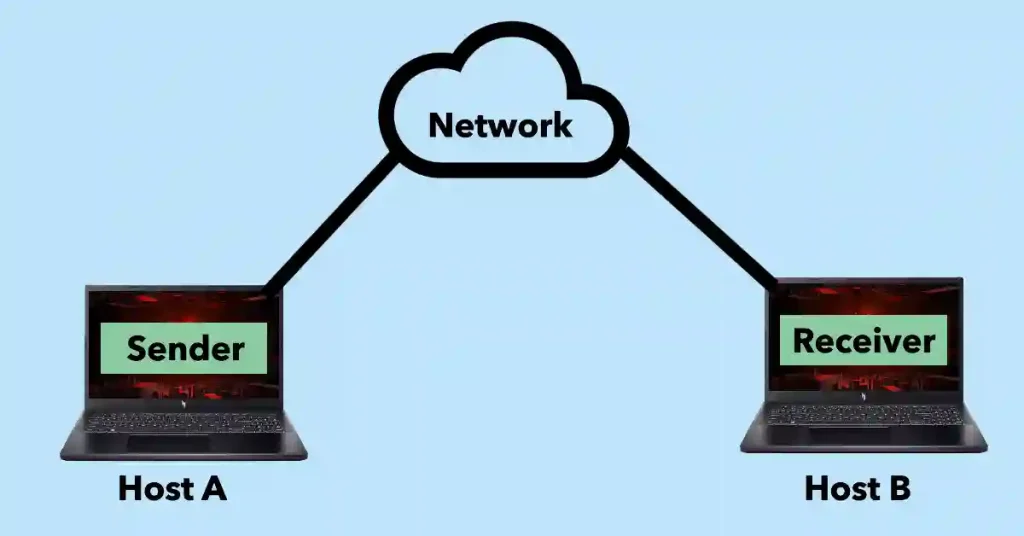The User Datagram Protocol (UDP) is a lightweight communication protocol optimized for low-latency, loss-tolerant data transmission, ideal for Internet applications. Paired with IP (UDP/IP), it sends datagrams—small data packets—alongside TCP, serving CCNA/CCNP learners in 2025 network design.
User Datagram Protocol (UDP) Low Overhead vs Reliability
UDP provides basic transport layer functions with lower bandwidth overhead and latency than TCP. As a connectionless protocol, it lacks retransmission, flow control, and sequencing for lost or out-of-order packets, making it less reliable than TCP. However, this doesn’t imply UDP applications are inherently unreliable; these features must be handled at the application layer if needed.
UDP’s low overhead makes it ideal for latency-sensitive applications like gaming, VoIP, and video streaming, tolerating data loss with minimal quality impact. As a connectionless protocol, it skips handshakes, starting data transmission instantly. Monitor with netstat -u (Windows) or ss -u (Linux).
UDP Datagram reassembly
UDP datagrams may arrive out of order due to varied routes, lacking sequence numbers, or reordering mechanisms unlike TCP. Applications must handle reassembly and sequencing if order is critical.

Test UDP reassembly with a streaming app: On Windows, use netstat -u -a to check port 5004 (RTP); on Linux, use ss -u -l -p to verify, ensuring application-level reordering.
UDP Server Processes and Requests
UDP server applications use well-known or registered port numbers (e.g., 53 for DNS). On Windows, configure with netsh advfirewall firewall add rule name=”Allow UDP 53″ dir=in protocol=UDP localport=53; on Linux, use sudo ufw allow 53/udp. UDP forwards datagrams to the matching application based on port numbers, verifiable with ss -u -l as of 2025.

UDP Client Processes
The UDP client initiates communication by selecting a random source port (e.g., 49152-65535) and targeting a server’s well-known port (e.g., 123 for NTP). On Windows, test with nslookup -vc or Linux with nc -u 192.168.1.1 123. The port pair is embedded in datagram headers for bidirectional use, monitorable with netstat -u as of 2025.
Security Considerations
UDP’s lack of authentication makes it vulnerable to spoofing. Use firewalls (e.g., netsh advfirewall add rule name=”Block UDP 123″ dir=in protocol=UDP localport=123 on Windows or sudo ufw deny 123/udp on Linux) to secure NTP ports, critical for 2025.
Troubleshooting Tips
If datagrams are dropped, check with ping -n (Windows) or ping -c (Linux) for network issues.
For port conflicts, use netstat -u -a (Windows) or ss -u -l (Linux) and reassign ports.
Performance Optimization
Enhance UDP throughput on Linux with sysctl -w net.core.rmem_max=8388608 or Windows with netsh int tcp set global rss=enabled, boosting 2025 real-time apps as of 2025.
Use Cases
UDP excels in DNS (port 53), SNMP (port 161), and multicast streaming. Configure DNS on Linux with named or Windows with dnscmd, optimizing for 2025 network demands as of 2025.
Conclusion
In conclusion, the User Datagram Protocol (UDP) stands out as a vital, lightweight protocol for low-latency, loss-tolerant applications, making it indispensable for 2025 network environments like gaming, VoIP, and DNS. Its connectionless nature minimizes overhead but requires application-level management of reassembly and sequencing, unlike TCP.
By leveraging well-known ports and OS tools—such as netstat -u on Windows or ss -u on Linux—network administrators can effectively configure and monitor UDP traffic. Security measures, including firewall rules (e.g., ufw deny 123/udp on Linux), and performance optimizations (e.g., sysctl -w net.core.rmem_max=8388608 on Linux) further enhance its utility. For CCNA/CCNP learners, mastering UDP’s strengths and limitations, alongside practical troubleshooting, ensures robust network design and management as of 2025.
FAQs
What is the User Datagram Protocol (UDP)?
UDP is a connectionless protocol that enables fast data transmission between devices. It sends datagrams without establishing a connection, making it suitable for applications like streaming.
How does UDP differ from TCP?
Unlike TCP, UDP does not guarantee delivery or order of packets and lacks flow control. It prioritizes speed over reliability, ideal for time-sensitive data like video streaming.
Why is UDP considered connectionless?
UDP is connectionless because it sends data without a preliminary handshake. Each datagram is independent, reducing overhead but risking packet loss.
What are the advantages of using UDP?
UDP offers low latency and reduced overhead, making it efficient for real-time applications. It is widely used in gaming, VoIP, and live broadcasts.
Can UDP ensure reliable data delivery?
UDP does not ensure reliable delivery as it lacks retransmission or acknowledgment mechanisms. Reliability depends on the application layer protocols.





